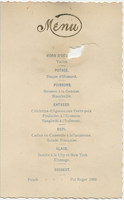Search the Special Collections and Archives Portal
Search Results
Carson City, Nevada, 1980 to 1989
Level of Description
Scope and Contents
Materials contain photographic slides of neon signs in Carson City, Nevada from 1980 to 1989.
Archival Collection
Collection Name: Neon in Nevada Photograph Collection
Box/Folder: N/A
Archival Component
One Evening in July, 2001
Level of Description
Archival Collection
Collection Name: Guide to the Canadian Film Centre Worldwide Short Film Festival Submissions
Box/Folder: Box 2002-017
Archival Component
July's Wet Dream, 2003
Level of Description
Archival Collection
Collection Name: Guide to the Canadian Film Centre Worldwide Short Film Festival Submissions
Box/Folder: Box 2005-007
Archival Component
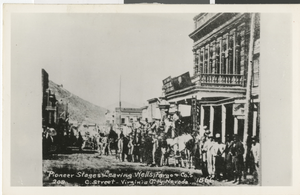
Postcard of pioneer stages on C Street, Virginia City, Nevada, 1866
Date
Archival Collection
Description
Image

Transcript of interview with Julie Menard by Joyce Marshall, March 17, 1996
Date
Archival Collection
Description
Julie Menard began her career as a showgirl in 1964, performing in the Folies Bergere at the Tropicana Hotel. Although she appeared in the show for only sixteen months, she offers an insider’s view of the early Las Vegas entertainment scene. She describes a period when showgirls were treated as local royalty and “the boys” wielded considerable influence. Menard’s narrative sheds light on the glamour and complexities of the showgirl. Her descriptions of physical characteristics of the job, the day to day work schedules, the expectations of physical beauty, as well as the stigma of her occupation outside of Las Vegas offer a fuller view of the job. Menard left Las Vegas in 1966 to pursue a film career in Europe but like many Las Vegas entertainers, she returned to make the desert city her home. Although her brief performing career failed to prepare her for future employment, she relishes her brief experience as a showgirl. Her narrative evokes the glamour, excitement and mystery of Las
Text
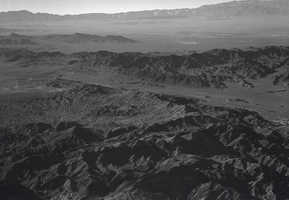
Film transparency of Boulder City, Nevada, circa 1931-1940
Date
Archival Collection
Description
Image
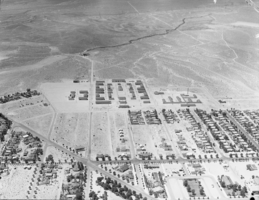
Film transparency of Boulder City, Nevada, circa 1930-1940
Date
Archival Collection
Description
Image
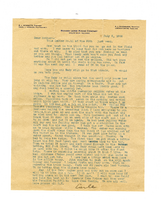
Letter from C. A. Earle Rinker to his mother, July 2, 1908
Date
Archival Collection
Description
Text
Boulder City, Nevada, 1932-1952
Level of Description
Scope and Contents
Materials contain photographs of Boulder City, Nevada from 1932 to 1952, including photographs of schools, children, construction projects, and architectural sketches.
Archival Collection
Collection Name: Elbert Edwards Photograph Collection
Box/Folder: N/A
Archival Component

